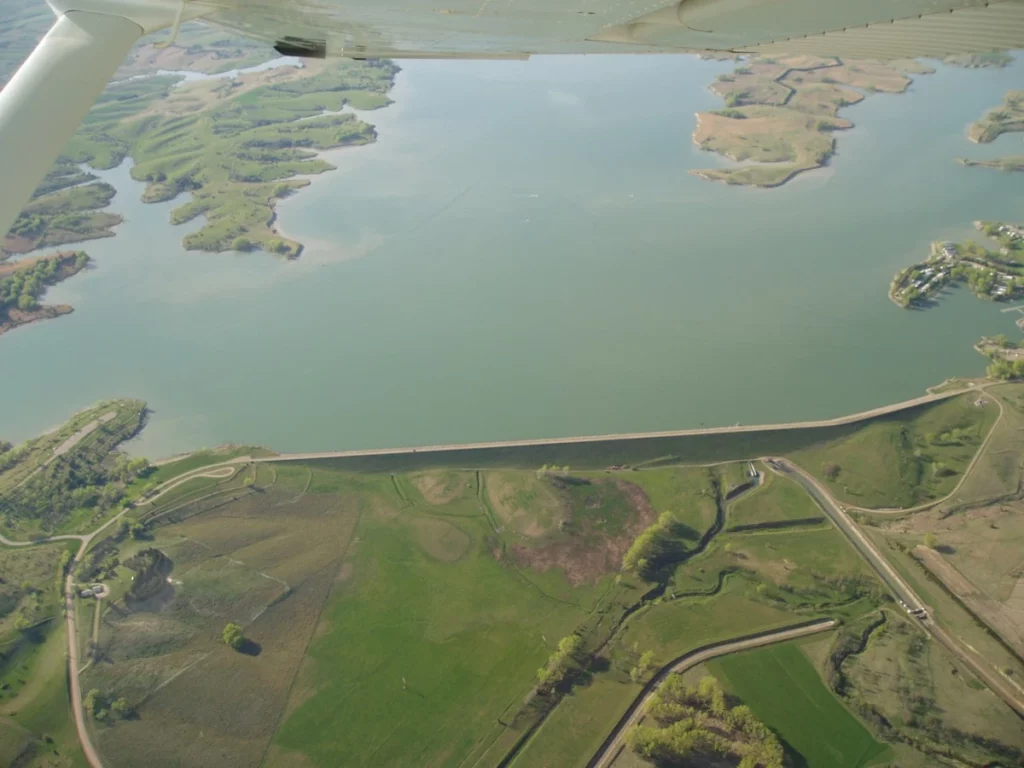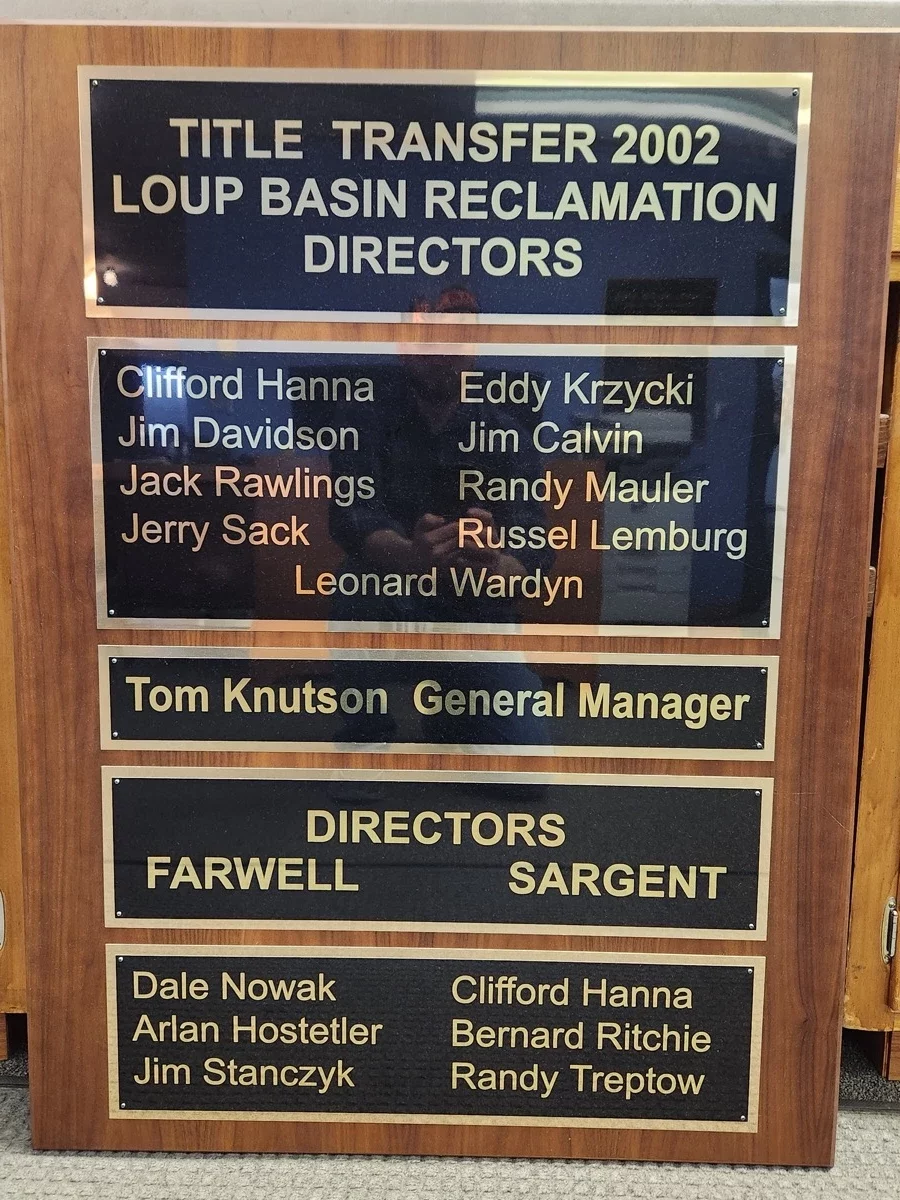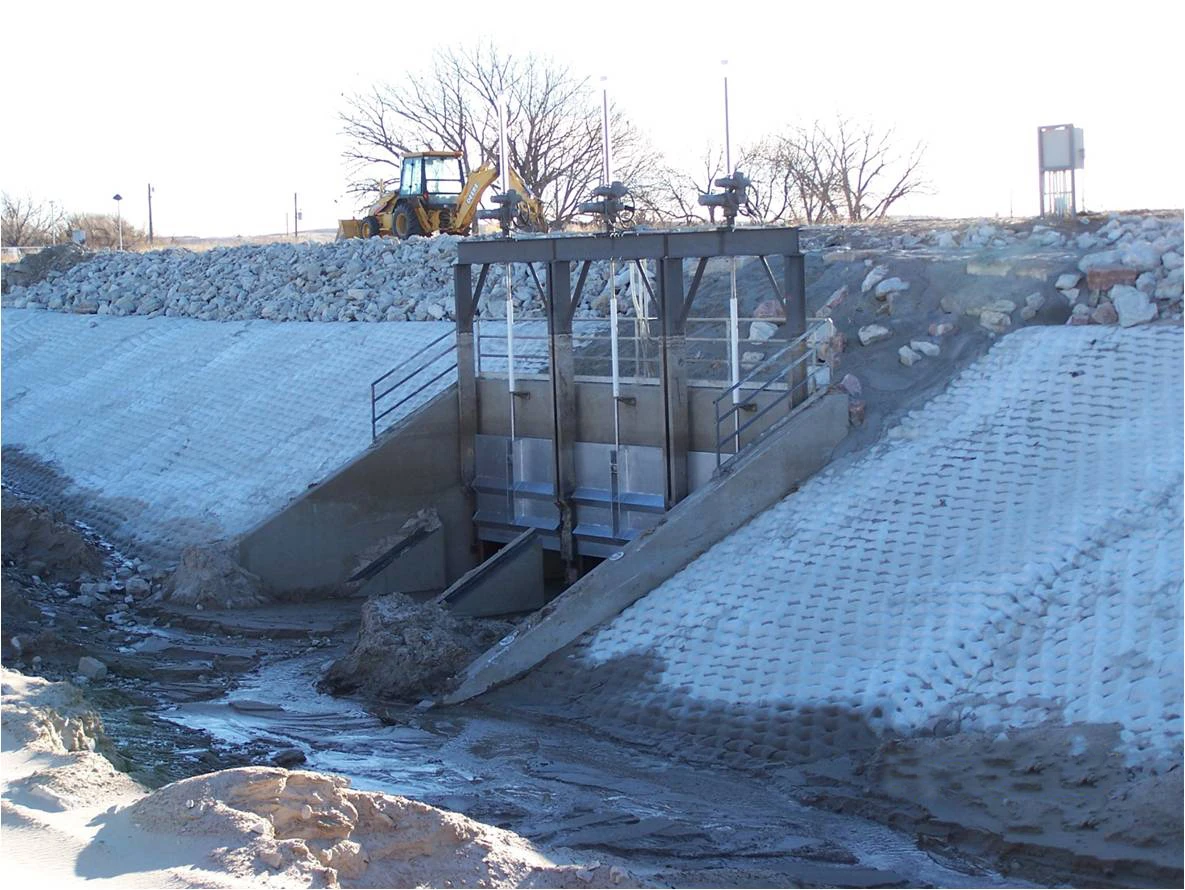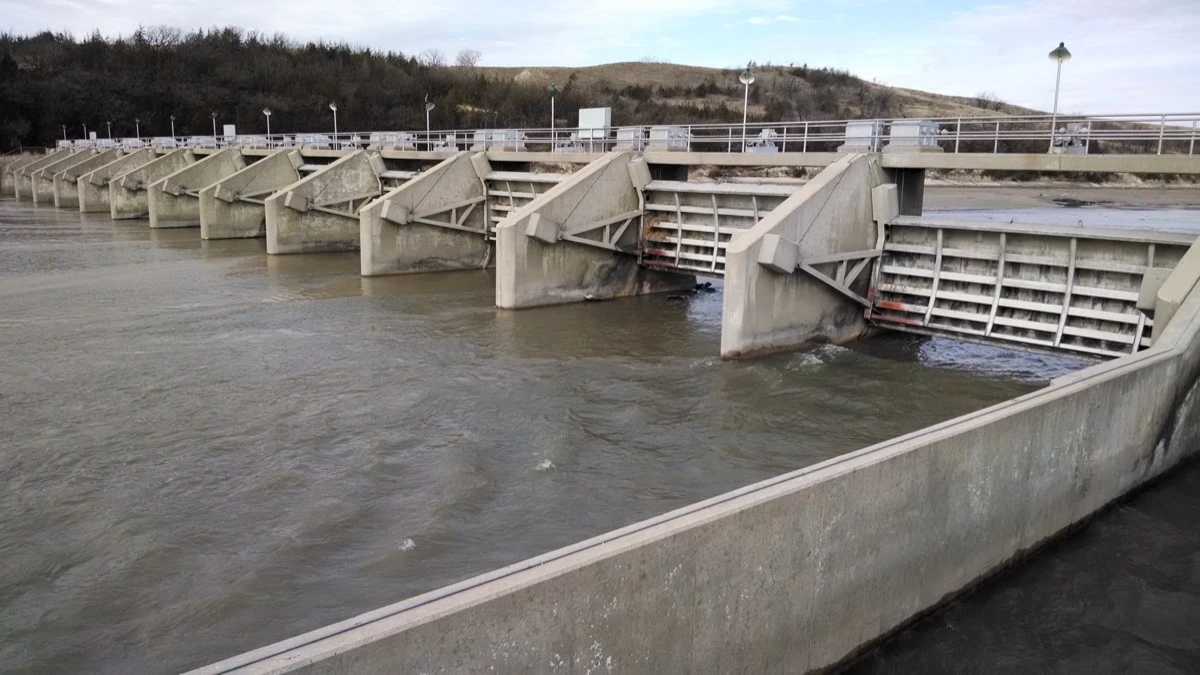Tom Knutson: 20 Years of Title Transfer

Tom Knutson was the general manager of central Nebraska’s Loup Basin Reclamation District and its daughter districts, Farwell Irrigation District and Sargent Irrigation District, when Loup Basin completed a title transfer from the Bureau of Reclamation in 2002. Now, 20 years later,he is helping other districts buy back their assets as the president of Water Management Solutions LLC. In this interview, Mr. Knutson tells Irrigation Leader the story of how the districts pulled off the deal—and what they gained along the way.
Irrigation Leader: Please introduce yourself and tell us about your background.
Tom Knutson: I am a farm boy from Minnesota. I graduated from South Dakota State University with a geography degree and a minor in economics. My first job was as a water resources planner for the South Dakota Department of Natural Resources in Pierre, South Dakota. After a year, I took a job as a project manager for the Oahe Conservancy Subdistrict in South Dakota, which was trying to build a 190,000‑acre irrigation project in the James Valley. That got me interested in irrigation. In the late 1979s, after a few years of political opposition and President Carter putting the project on the hit list, the composition of the Oahe board changed in an election, and the new board decided in a six-to-five vote to stop the construction of the project. I ended up back in Pierre, working for the Department of Natural Resources as supervisor of the State Water Plan. The governor appreciated my work and offered me an appointment to work with cities in the state as a coordinator for grants for water and sewer projects. When that governor was appointed ambassador to Singapore, Lieutenant Governor Wollman, who succeeded him, asked me to stay on in that capacity.
A new governor was elected, Bill Janklow, a Republican, who offered me the job of executive director of the South Dakota Water Development Task Force. This was after he had fired all the people above me and I was next in line to get the axe. He said, “I like your work ethic. What party are you?” I was a young kid at the time, and I said, “Norwegian.” He laughed and said, “You’re now a Republican, and you’re hired.” I worked with the governor, two state senators, two state house members, and six representatives from local conservancy districts in the state. That job only lasted 18 months before the funding ran out, but in it, I learned a lot about water politics, testifying before committees, and attempting to work out differences of opinion with those who had diverse views.
Then, I moved to Omaha and went to work for the Missouri River Basin Commission, which was trying to resolve issues between states. It was quite an eye-opener for a person who thought those issues were already solved. The Missouri River Basin Commission, along with other river basin commissions, was dissolved by President Reagan, and so I moved back to South Dakota.
The Oahe Conservancy Subdistrict was having an election for directors. I decided to be the campaign manager for three people running for the board. I wrote ads for the paper and sang songs on the radio from an apartment, and we won the election. On a vote of six to five, I was hired as the general manager of the Oahe Conservancy Subdistrict. Within a year, we had the minority on the board suing the majority in a case called Nassig v. Knutson, and in May 1984, I asked Governor Janklow to call a special session to eliminate the state’s six subdistricts. I testified before the legislature and said I was looking forward to unemployment given the harassment, the lawsuits, and the misinformation that people had used to stop the irrigation project. A law was passed to eliminate subdistricts and replace them with water development districts starting in January 1985.
In December 1984, I applied for the position of general manager of the Loup Basin Reclamation District, the Farwell Irrigation District, and the Sargent Irrigation District in Nebraska. Loup Basin Reclamation District is the parent entity of the Farwell and Sargent Irrigation Districts. I was offered the position and started in January 1985. I did not know a soul in the four-county area, nor did I know much about their projects. However, I did understand water politics, Reclamation contracts, and how to supervise personnel. The first few months were a learning curve, but I used my sense of humor and a little bit of luck to fit into what became a nearly 30‑year career with the districts.
Irrigation Leader: Please tell us about the title transfer you completed for the districts.
Tom Knutson: In addition to the repayment contracts that the Farwell and Sargent Irrigation Districts had with Reclamation for their canal systems, Loup River Reclamation District had a water service contract with Reclamation that covered the use of Reclamation’s dams and reservoirs. That water service contract had to be renewed every 4 years. We found out that when the contract expired in 1998, Reclamation was going to make things hard for us by upping the water service contract from $1.95 an acre to as much as $12.95 an acre. I took this information to the board. We were told that we would get less water out of the reservoir for crops. My board members said, “What can we do?” I responded, “I think it’s time to just buy it.”

It took us until 2002 to complete the title transfer process. It required a lot of work. We worked with members of Congress, commissioners of Reclamation, the secretary of the interior, and the governor of Nebraska. We were initially told that it would cost $39.5 million to buy out our project. At the end of the day, we probably wouldn’t have gotten it done if it weren’t for United States Senator Bob Kerrey and his friendship with Secretary of the Interior Bruce Babbitt. That friendship went back to the days when they were both governors. Senator Kerrey called me one afternoon and said, “Tom, this is Senator Bob Kerrey. I need you in Washington, DC, in the morning. We’re going to meet with Secretary of the Interior Bruce Babbitt.” I caught a red-eye flight out of Lincoln. At the meeting the next day, Senator Kerrey introduced me to Secretary Babbitt. He said, “Here’s what I’m going to do, Mr. Secretary. I’m going to introduce a bill that authorizes this project to be transferred for $5 million.” Secretary Babbitt said that that number was a long way from $39.5 million. Senator Kerrey said, “But is it worth $39.5 million?” They went off and huddled, and when they came back, Senator Kerrey said, “You’ve got a deal.”
However, I still wasn’t satisfied. The bill said that we must have a memorandum of understanding with Reclamation that considered all current liabilities. I was concerned about drainage from Sherman Reservoir, which went through Loup City, and the possibility that we might have to fix that drainage system right away. I had several engineers tell me how much it might cost, and we went and discussed it with Reclamation. Reclamation said, “How much do you need that $5 million price reduced?” I said, “Let’s cut it in half and you’ll have a deal.” Reclamation would not bite. I had a conference call with the regional director’s office, and I purposely sent Senator Kerrey the phone number. He jumped on the call unannounced and said that I was going to offer Reclamation $2.5 million and that the bureau could take it or leave it. Reclamation accepted the $2.5 million offer, and that is what we paid when we bought the project on November 21, 2002. That was a moment I will never forget.
Irrigation Leader: What infrastructure was transferred to your ownership?

Tom Knutson: We received all the facilities that we used for the Farwell and Sargent Irrigation Districts, including diversion dams—Milburn Dam, which was part of Sargent’s system, and Arcadia Dam and Sherman Dam and Reservoir, which were part of Farwell’s system—and the canal system with all the laterals and drainage, which was used by both districts. Today, those facilities are owned by the parent entity, the Loup Basin Reclamation District. It has taxing power over everyone in the four-county area, including the cities, to help fund any needed repair projects.
Irrigation Leader: What new responsibilities did you take on when the infrastructure was transferred over to your ownership?
Tom Knutson: As I saw it, there was hardly anything new, because there were ongoing water supply and operations agreements among Loup Basin, Farwell, and Sargent. The only new thing was that now we could adjust the dates of the water season and the date when we would start filling the reservoir. Of course, we had to buy liability insurance for the reservoir.
Irrigation Leader: It’s been more than 20 years now. Looking back, what would you say the results of title transfer have been?
Tom Knutson: I would say there have been tremendous benefits. One of the biggest benefits was that we could hire our own engineering people and get studies done for half the cost we paid before. We could put a rehabilitation project together and get it completed for probably about a third of the cost that we would have had to pay Reclamation under contract. A good example was a project at Sargent’s Milburn Diversion Dam. We had had issues with one of the sluice gates since the dam’s construction in 1958. We decided to go ahead and fix it after the title transfer. My boards were concerned about the cost, which Reclamation had estimated at about $3 million. But then, we found out from our engineering people that we could do the project for $1 million.
Another example is that we were able to put in an entirely new dam on the Middle Loup River on the condition that we put in a fish ladder. That project was paid for entirely with a U.S. Fish and Wildlife Service grant. We never would have gotten that kind of opportunity had our infrastructure still been owned by Reclamation.
After the transfer, we were no longer obligated to do all the reporting to Reclamation on acreage limitation, water usage, weed reports, and so on. The board of directors can now change the acreage limitation law—it has done so and could make further changes in the future if it chooses to do so. That could present an opportunity for farmers to farm a little bit more. The directors are elected by the farmers themselves.

Irrigation Leader: Based on your experience, what advice do you have for districts that are thinking about pursuing title transfer?
Tom Knutson: My advice is don’t sit on it and think about it. Make a decision and do it. Get started right away, because you have been renting your project for years with a lot of Reclamation overhead. Now is the time to own it. The Dingell Act, which passed in 2018, enables districts to do a transfer in 2–3 years.
Since I left Farwell, I started a company, Water Management Solutions LLC. I’ve been involved in title transfers in Nebraska, North Dakota, Washington State, and Wyoming. All of them are considering title transfer.
The Twin Loups Irrigation District in Nebraska is moving forward with title transfer. It has a reservoir called Calamus that irrigates about 57,000 acres and a reservoir called Davis Creek. The district has completed the first two steps of title transfer and now is working on a memorandum of agreement with Reclamation.
Irrigation Leader: You talked about some of the legal mechanisms that can be used for pursuing title transfers, such as the Dingell Act. Are there any changes that you think are necessary to streamline the process?
Tom Knutson: Yes. Why does Reclamation put the districts through the pain of studies when it could shortcut the studies while still meeting the requirements of the law? I still contend that the federal government goes overboard with the number of studies it requires. It lives in the land of “what if?” even when it comes to things that are near certainties. My question is: Can that district handle the facilities and take care of the project on its own? If the answer is yes, why put it through the pain of studying whether it can?
Back in the 1960s and 1970s, it was conventional wisdom that after a local sponsor repaid Reclamation for its water service contract and repayment contract, it would become the owner of the infrastructure. That all changed at some point, and I do not believe it should have.
Irrigation Leader: Looking back, would you still make the same decision again to do the title transfer?
Tom Knutson: It’s been a great transfer. I’m so proud to have been a part of it. If you were to arrive at Farwell, Nebraska, today for a water user meeting, you would not find one user who would tell you it was a bad decision.
Tom Knutson, the former general manager of the Loup Basin Reclamation District and the Farwell and Sargent Irrigation Districts, is the president of Water Management Solutions LLC. He can be contacted at tom.knutson819@gmail.com or (308) 754‑8699.
